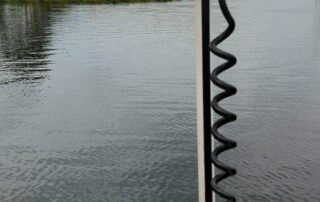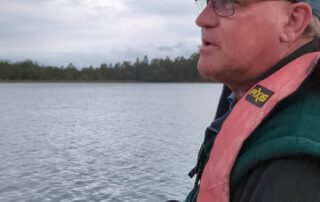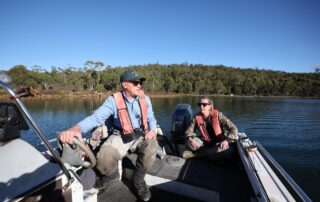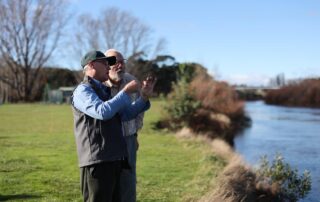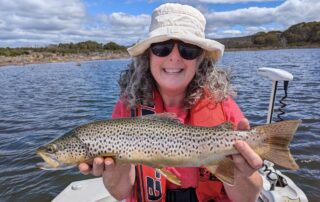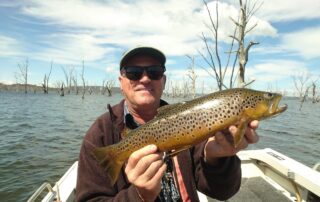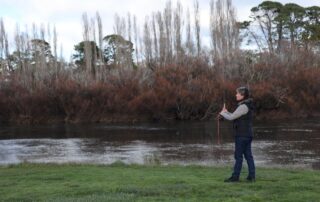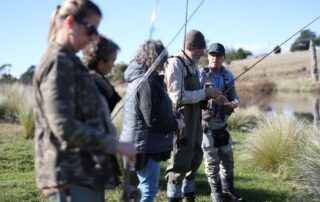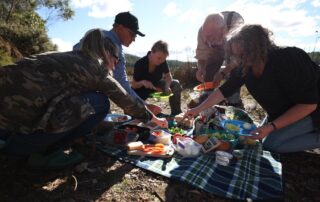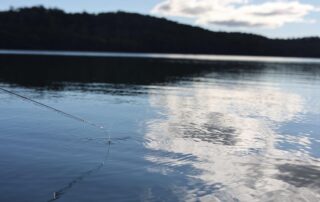Benefits of an electric outboard motor
There are many advantages to using an electric outboard motor when fishing on a lake. Manipulate your position Stealth Quietness in approach and presence Reduction of impact on the environment Use of clean energy Economics Maneuverability Using a remote to control the electric motor gives Gary the ability to keep his eyes on the fishing action without having to focus on starting the motor. Higher end models have GPS spotlock, which holds your position securely moored, saves putting out an anchor. https://www.youtube.com/shorts/yYF6-km7cx8
Gary chats about Four Springs Lake
Gary tells us a little bit about Four Springs Lake, and the triggers for a mayfly hatch. https://youtu.be/T5-m5FJtvss
A blue sky day
Blue sky day, polarised sunglasses, moving slowly, discussion on strategy - how to approach feeding fish. On our guided fishing tours you will learn a variety of strategies to build your fly fishing knowledge.
The right fly can trigger a response
Dennis and guide, Gary discuss the details of a trout fly. Q. Why do trout take a specific fly? A. The design of a fly often triggers a response. Shape, silhouette, movement, how it sits on, or under, or in the film of the water, for example. During our guided fishing tours you will increase your knowledge and understanding around flies, insects, trout food, trout behaviour, etc.
Mayfly chomping wild brown trout
Good weed beds and reliable food sources will harbour better than average specimens. This mayfly chomping Arthurs Lake wild brown trout is a good example. Fiona presented a twin dry fly rig and on the point was a no-hackle CDC emerger, which was promptly taken without hesitation. Image credit: Gary France
Northern shores of Arthurs Lake
The road less trodden along the northern shores of Arthurs Lake, with rich weed beds and extensive shallow margins, harbours some very good specimens like this 53cm brown trout, which came up from the bottom in a foot of water to take an emerging mayfly imitation. Image: Gary France
Basic fly cast
Here is the highly valuable lift up and lay down single cast. Note the rod on the back stroke STOP is vertical at 12 o'clock. This throws the line high, setting up for a good forward stroke. When beginners to fly fishing come fishing with us, we teach casting basics on the grass first. The we add water!
Learning
A small group receives fly fishing instruction from their guide, Gary France. In this moment on the river bank, they are learning about trout foods and discussing what fly they might use - what's on the ground, what's in the air, what's in the grass, what's on the water, or popping off the water from the depths.
Lunch!
A group of guided fly fishing anglers stop for lunch. We provide hearty fresh food to energise your afternoon’s fishing activities. We cater to all dietary needs. We stop close to the lake or river and watch for activity, chatting about our strategies for the afternoon.
Keeping in touch with the line
Have you heard the words "keep in touch with the line"? What does this mean? To keep in touch with your line is to keep your rod tip low to the water. This removes much of the slack from the line. When you remove the slack from your line, you are more likely to feel the take when a fish eats your fly. And when the fish eats your fly, there's no slack line for it to run away with. And there's less line for you to pull in, giving the fish less chance of diving into the weeds or [...]

